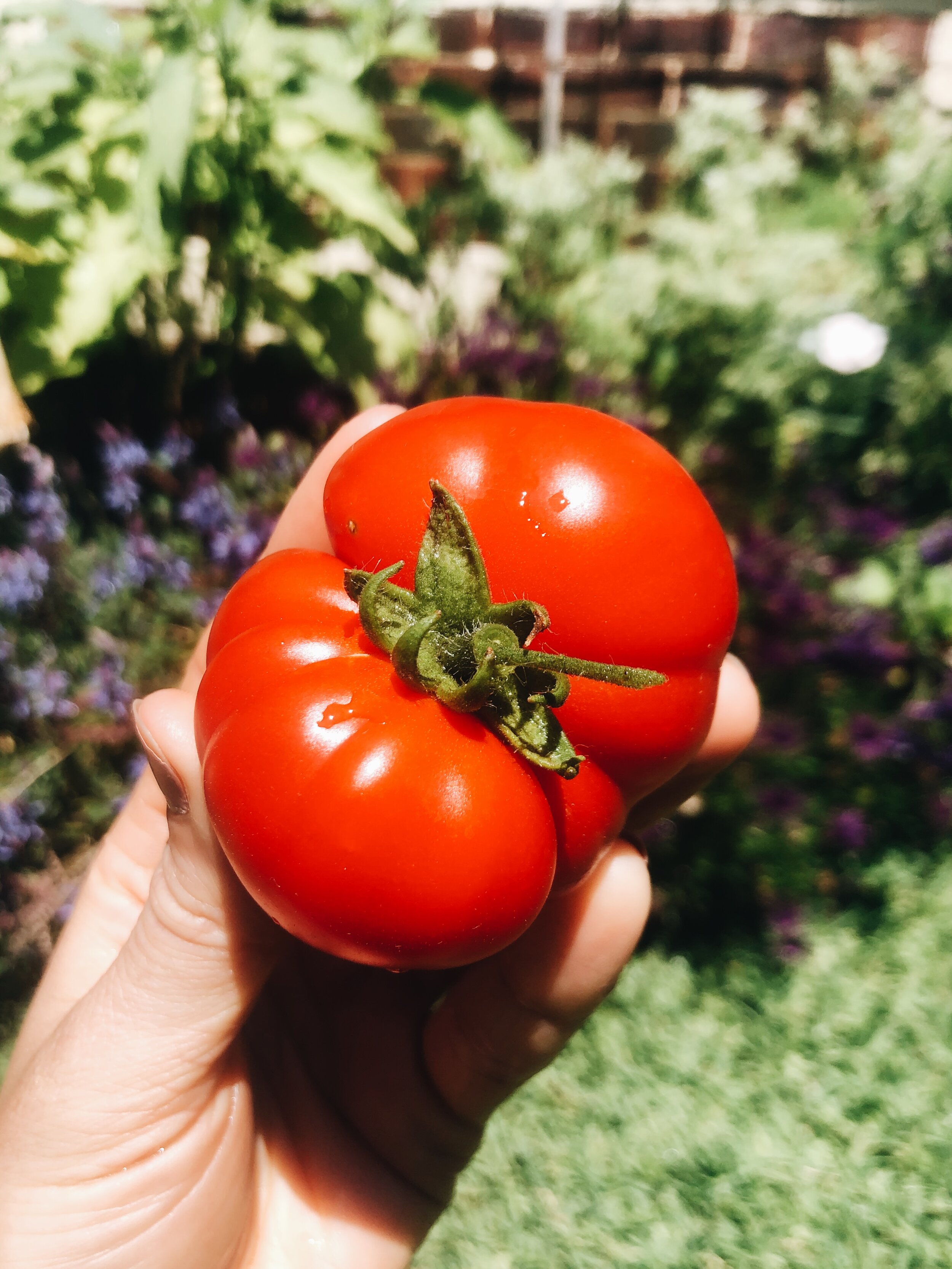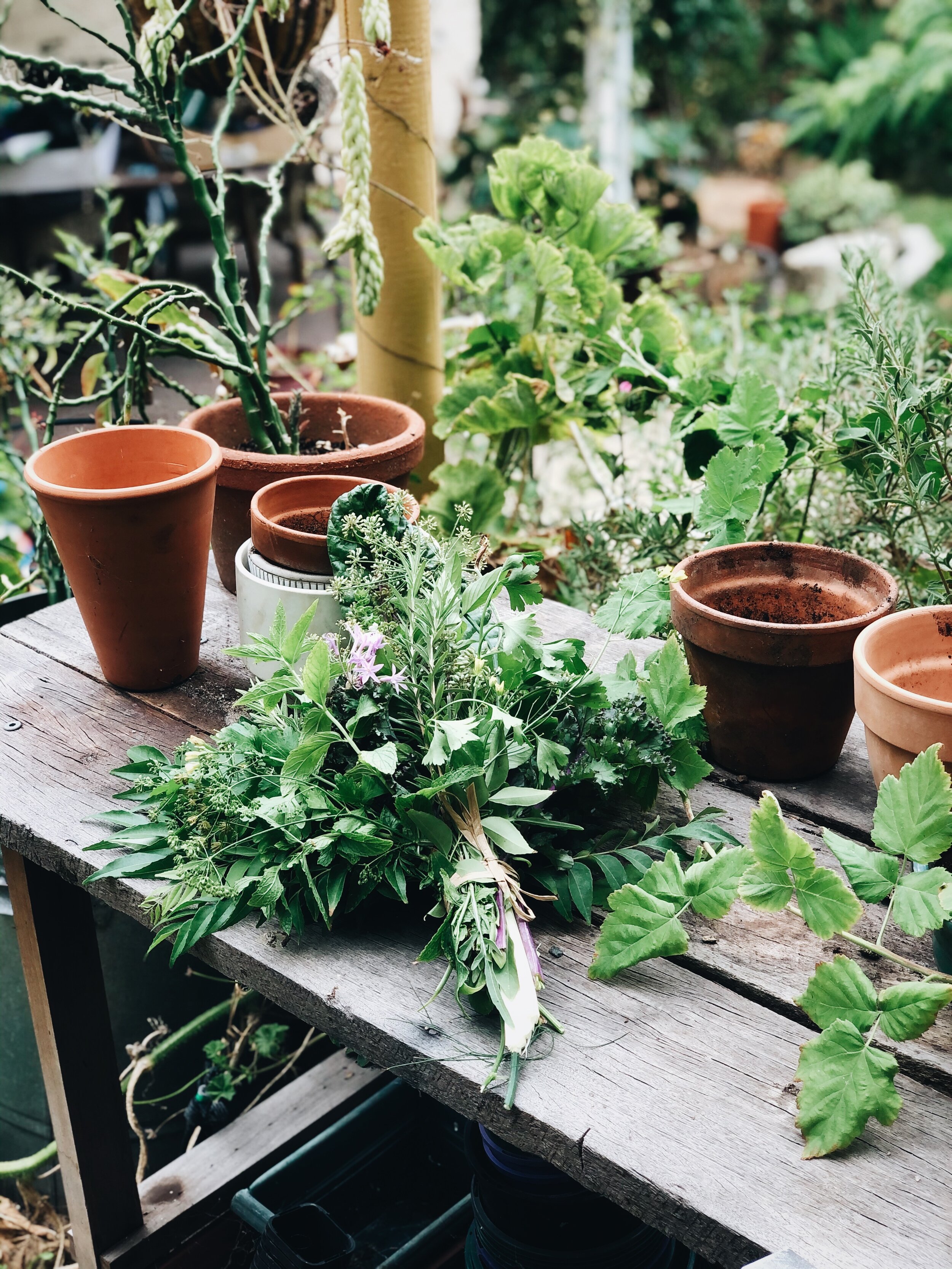7 Gardening Habits Worth Cultivating
I think people think gardening is a lot harder than it really is. Which, on the one hand, works for me because I get to keep writing blog posts full of self-assured tips and suggestions. But on the other hand it kind of sucks because a lot of people get unnecessarily put off gardening, certain that it will involve a prohibitive amount of time, money and effort. As a result, many would-be gardeners never begin. The yard stays bare, the garden beds empty. And this is so sad, because it’s not even true. The truth is, nine times out of ten gardening is just about a few good habits and a bit of consistency.
The internet is overflowing with garden advice. But the best way to learn to garden is by gardening. Get a few good gardening habits under your belt and then just get out there! Buy yourself a mulberry tree and plonk it in an empty patch of your yard, it will reward you with juicy almost-black berries every springtime. Get a Grevillea and find it a sunny corner of your garden, its flowers contain nectar that will attract native birds to your patch. Throw a birdbath underneath it and watch your new garden visitors bathe in its dappled shade. If you have a sunny balcony, buy a nice big pot, fill it with good quality soil and (in late spring) plant a chilli. Hell, get two pots and plant a chilli and a lemongrass. Your fresh, homemade curries will never be the same again! If flowers are your thing, get a few smaller terracotta pots and fill them with flowering Kalanchoes, put them in a sunny spot and only water them (a big soak) when the soil is bone dry. Try a Pelargonium or a beautiful big pot of thyme. If your balcony is shady, grow Impatiens and Vincas in beautiful glazed pots (just make sure the pots have holes in the bottom for the water to drain out!).
I’m getting sidetracked.
What I’m trying to say is: plants are amazing, gardening is wonderful and it’s really not that hard. Cultivate* these 7 habits and you’ll find your plants tend to survive, your soil tends to be healthy and your garden tends to reward you with beauty and food. Simple as that!
* pun intended
The late-summer garden, 2021
1. Water in new plants
If you find that a lot of the new plants you put in tend to wilt and die, you might be overlooking one of the easiest garden fixes ever and something that will make a huge difference to the wellbeing of your garden. Water in every single new plant as soon as you’ve planted it (even if you’ve just put it in a new pot). This is the easiest habit to form and will soon become second nature. Even things like cacti or succulents can benefit from a good soak once replanted in a new position. Watering in plants helps reduce the trauma of shifting them, it encourages their roots to spread out into the soil and helps them acclimatise to their new position, leading to healthier, more resilient plants.
2. Grow reliable plants that you can harvest every day
Every year I think I’m going to be excited and rewarded by the showy plants. The giant bananas, the glossy tomatoes, big yellow cobs of sweetcorn. And some years I am. Some years everything works and I get sweet, juicy corn or a single perfect head of broccoli. BUT if those were the only plants growing in my garden I’d probably have given up gardening years ago and I certainly wouldn’t have a lot to eat. This year a rat ate my tomatoes AND half of my bananas, and I have no idea what happened to my corn cobs but they ended up stunted and sad. The showy plants are great when they work, but the life of a suburban gardener is one of mishaps and miscalculations. One year some vegetable can grow PERFECTLY and you have absolutely no idea why and no idea how to replicate it the following year. That’s why it’s good to make a habit of always growing the reliable plants too. Silverbeet, lettuce, basil, parsley, curry trees, lemon grass, bay trees, kaffir limes, these may not always be the most impressive things to grow, but every single day you can harvest them and cook them into delicious, fresh, flavourful dishes. Which means that every day you will be reminded how valuable your garden is and you’ll be motivated to keep caring for it.
3. Mulch at least twice a year
One of the best habits I’ve formed in the garden is regularly adding nutrients back into the soil. I add clay (which helps improve the soil’s ability to absorb water), animal manure (which improves soil structure and adds nutrients that feed the plants) lupin mulch (which adds nutrients and also provides a thick top layer to protect the soil underneath from the harsh sun’s rays). Making a habit of adding nutrients back into your soil saves so much effort in the long run. Plants just don’t grow that well in sub-par soil. It might feel like a pain spreading manure over the entire garden, but doing it just 2-3 times a year (or go for broke and do it once each season!) means you’ll have soil that stays healthy all year round, giving your plants a great foundation to spread their roots.
4. Return spent plants to the garden
One of the not-so-great habits that a gardener can cultivate is ripping plants out of the soil and chucking them straight in the green waste bin. Spent plants (i.e., annuals that have finished blooming and set seed) have a whole lot going for them! As they grow, plants feed off the soil, absorbing important nutrients and minerals. Every time you tear up a plant and throw it away, you’re throwing away all the good stuff it drew out of the soil. If you make a habit of adding spent plants back into your garden beds (either by mulching them, composting them or simply tearing them up and laying them on top of the soil), these plants will slowly decompose and return a lot of that goodness back into the soil.
Dried fennel seeds ready to return to the garden
5. Let plants go to seed
This is basically an excuse to be a lazy gardener, and I love it. In much the same way that turfing your spent plants wastes an opportunity to improve your soil, ripping out plants before they’ve had a chance to set seeds wastes a wonderful opportunity to grow even more plants - for free! Things like fennel, parsley, coriander, nemesia, alyssum, basil, Flanders poppies, calendula, milkweed, passionfruit marigolds, borage and nasturtiums all pop up in my garden free of charge, year after year. And this happens largely because I leave the plants in the ground after they’ve finished flowering, giving them time to set seed for the following year. This takes a little patience, and you might be itching to get the next wave of seedlings in the beds, but I promise it’s worth it. Leave at least one of each plant variety in the ground and wait until it is dry, crackly and has rattling seed pods or crispy flower heads. Then break open the seed pod or crumble the flowerhead over the soil. If you want to be really fancy you can always save the seeds and replant them yourself the following year, but I’m all about habits and laziness (maybe simplicity is a nicer word?) so I throw them right back into the ground and that works just fine!
Sunflowers, asparagus and chillies
6. Observe your garden
A gardener’s greatest assets are their power of observation and their willingness to experiment. Gardens, like all natural things, are in a constant state of flux. Plants burst up out of the soil, buds form and then explode into bloom, bees pollinate, caterpillars munch. This means that hard and fast rules aren’t always going to serve you that well in the garden. It’s much better to cultivate (word of the moment!) a curious and inquisitive attitude towards your garden; to tinker, try new things, and ultimately pay attention to what works and what doesn’t. And sometimes this mightn’t feel like gardening in the ‘right’ way. It won’t teach you all the Latin names of the plants or enable you to identify every single variety of Alocasia, but, with time you’ll start to get gut instincts about things that tend to be spot on. You might see a curling leaf on a citrus tree and realise the plant is thirsty. You might notice that your rose is growing leggy, spindly branches and realise it probably needs to be shifted to a sunnier position (shift it in winter when it’s dormant!). The more you observe your garden, the more you test out new methods and ideas, the more you’ll get a real instinct for what your plants need and enjoy, and that is worth more than a thousand internet searches!
A Monarch butterfly visiting flowering Milkweed plants
7. Enjoy your garden
If you cultivate only one habit in your garden, it must be this one. An unenjoyed garden is a terrible waste! For a lot of people ‘gardening’ is associated with repetitive, effortful jobs like lawn maintenance, heavy pruning, weeding and general tidying. So it’s easy to see why gardening might seem like just a lot of boring and arduous work. But having a garden is so much more than that! Spend time out there. Notice the bees and the birds, watch how the seasons change the way the sun hits the trees. Pour yourself endless cups of tea in the garden and watch your heart rate slow and your mind stop whirling. Befriend the local animals and learn their names. And if you want to, just avoid the tidying jobs entirely! Messy gardens are better for insect life anyway! Find out what you love about your garden, and what part of gardening you really enjoy. If you love flowers, plant them and watch as their buds burst open, if you love edibles, fill your garden with herbs, chillies, radishes, strawberries and fruit trees and then actually sit out there and eat everything in the sunshine. The more time you spend in the garden, the more you’ll find yourself accidentally gardening - it happens almost implicitly. Once I started to simply enjoy being in my garden nothing felt like effort anymore. I gardened without realising I was gardening. And that was the best gardening habit of all.







